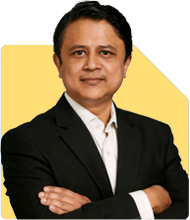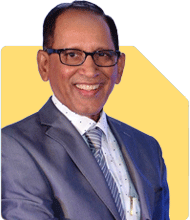Mayank Rautela | Answer |Ask -Follow
HR Expert - Answered on Mar 02, 2021
A management graduate from the Symbiosis Institute of Management Studies with a master's degree in labour laws from Pune University, Rautela has over 20 years of experience in general management, strategic human resources, global mergers and integrations and change management.... more

Sir,
I am still a fresher in the job market due to the lockdown.
I have failed to get selected in both online interviews as well as interviews I have personally attended.
I am feeling very demoralised.
Please share your valuable guidance.
With regards,
Mohit Dabra
B Tech (electrical), graduated in 2020 from YMCA Haryana
Applied for sales and marketing as a business development executive
Hi Mohit.
You are a qualified engineer, yet you are applying for sales and marketing roles. That’s like a footballer wanting to get into the Ranji team.
Please focus on your core area of expertise and look for opportunities in the engineering field. In order to do so, you may have to supplement your skills with additional certificate programmes.
With global markets opening up, do keep your options open for international roles.
A master's degree in electrical engineering could also be a good option for you.
If sales is your area of interest, then focus on engineering product/services companies to make use of your educational background.
You may like to see similar questions and answers below
Mayank Rautela | Answer |Ask -Follow
HR Expert - Answered on Jul 01, 2021
Mayank Rautela | Answer |Ask -Follow
HR Expert - Answered on Mar 10, 2021
Mayank Rautela | Answer |Ask -Follow
HR Expert - Answered on Feb 24, 2021
Mayank Rautela | Answer |Ask -Follow
HR Expert - Answered on Mar 30, 2022
Dr Shyam Jamalabad |107 Answers |Ask -Follow
Dentist - Answered on Dec 05, 2025
Dr Shyam Jamalabad |107 Answers |Ask -Follow
Dentist - Answered on Dec 05, 2025
Dr Dipankar Dutta |1836 Answers |Ask -Follow
Tech Careers and Skill Development Expert - Answered on Dec 05, 2025
Ulhas Joshi |280 Answers |Ask -Follow
Mutual Fund Expert - Answered on Dec 05, 2025
Dr Dipankar Dutta |1836 Answers |Ask -Follow
Tech Careers and Skill Development Expert - Answered on Dec 04, 2025
Ravi Mittal |676 Answers |Ask -Follow
Dating, Relationships Expert - Answered on Dec 04, 2025
Anu Krishna |1745 Answers |Ask -Follow
Relationships Expert, Mind Coach - Answered on Dec 04, 2025
Anu Krishna |1745 Answers |Ask -Follow
Relationships Expert, Mind Coach - Answered on Dec 04, 2025
Mayank Chandel |2562 Answers |Ask -Follow
IIT-JEE, NEET-UG, SAT, CLAT, CA, CS Exam Expert - Answered on Dec 04, 2025
Mayank Chandel |2562 Answers |Ask -Follow
IIT-JEE, NEET-UG, SAT, CLAT, CA, CS Exam Expert - Answered on Dec 04, 2025




























